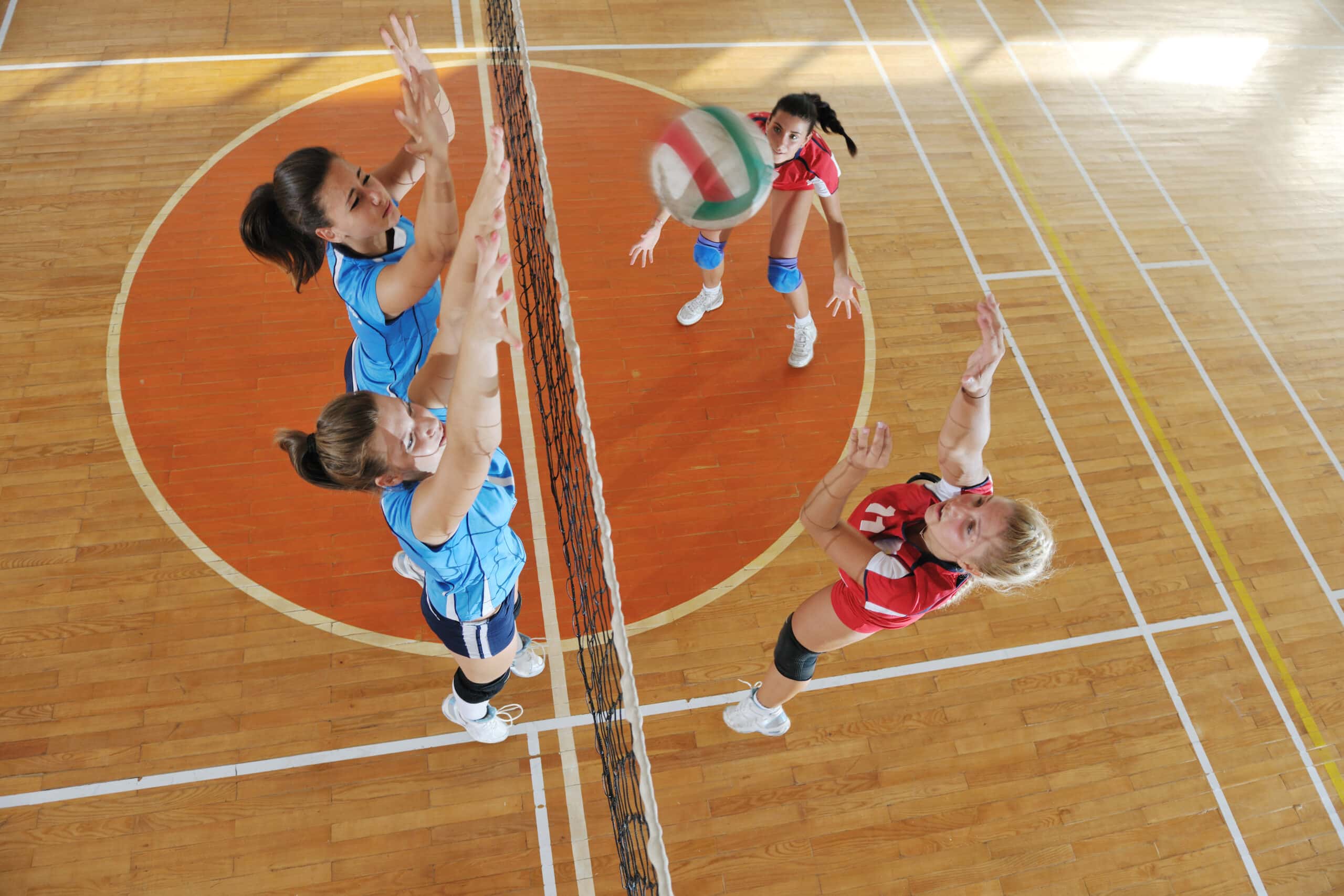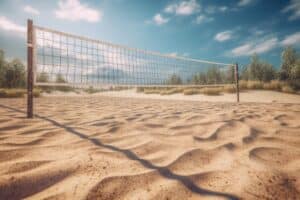What’s the Difference Between Indoor and Outdoor Volleyball?
Key Takeaways
- Court Size and Surface:
- Indoor volleyball is played on a hard, non-absorbent court surface, typically made of wood.
- Outdoor volleyball is played on sand, which provides a softer and more forgiving playing surface.
- Indoor courts are larger, measuring about 18 meters long and 9 meters wide, while outdoor courts are slightly smaller with a length of 16 meters and a width of 8 meters.
- Ball Type:
- In indoor volleyball, a heavier leather ball is used.
- Beach volleyball uses a softer, lighter, and larger ball.
- Number of Players:
- Indoor volleyball is typically played with six players on each side, with specialized positions.
- Beach volleyball is played in doubles, with only two players on each side and no specialized positions.
Volleyball is a popular sport enjoyed by people of all ages and skill levels. Whether you prefer the fast-paced, strategic nature of indoor volleyball or the relaxed, outdoor setting of beach volleyball, there are several key differences between these two variations of the game. In this article, we will explore the distinctions between indoor and outdoor volleyball in terms of court size, ball type, number of players, scoring, rules, and more.
Court Size and Surface
One of the most obvious differences between indoor and outdoor volleyball is the playing surface. Indoor volleyball is played on a hard, non-absorbent court surface, typically made of wood. On the other hand, outdoor volleyball is played on sand, which provides a softer and more forgiving playing surface. The sand adds an additional challenge to outdoor volleyball, as players must adjust their movements and technique to account for the shifting nature of the sand.
The court dimensions also differ between indoor and outdoor volleyball. Indoor courts are larger, measuring about 18 meters long and 9 meters wide. Outdoor courts, on the other hand, are slightly smaller, with a length of 16 meters and a width of 8 meters.
Ball Type
The type of ball used in indoor and outdoor volleyball also varies. In indoor volleyball, a heavier leather ball is used, which is designed to be more controllable and easier to set and spike. In contrast, beach volleyball uses a softer, lighter, and larger ball. The lighter ball allows for greater control and maneuverability, making it easier to play in the sandy outdoor environment.
Number of Players
The number of players on each side is another key difference between indoor and outdoor volleyball. Indoor volleyball is typically played with six players on each side, with specialized positions such as setter, libero, and middle blocker. Beach volleyball, on the other hand, is played in doubles, with only two players on each side. There are no specialized positions in beach volleyball, and players must be versatile and proficient in all aspects of the game.
Scoring
The scoring system in indoor and outdoor volleyball also differs. In indoor volleyball, matches are played in sets, with each set played to 25 points. Matches are typically best-of-five sets. In beach volleyball, matches consist of a best-of-three series of games, with each game played to 21 points. The scoring requirements for each set or game may vary slightly depending on the tournament or competition rules.
Rules
While many of the basic rules of volleyball apply to both indoor and outdoor variations, there are some rule differences between the two. For example, in indoor volleyball, players are allowed to use open hand tips to direct the ball, while in beach volleyball, open hand tips are not allowed. Additionally, crossing under the net and hitting the ball out of the net have different rules in indoor and outdoor volleyball.
Playing Environment
The playing environment is another notable distinction between indoor and outdoor volleyball. Indoor volleyball can be played in any weather condition, as it is played in enclosed areas such as gymnasiums or indoor stadiums. Outdoor volleyball, on the other hand, is greatly impacted by changes in weather and is suitable for sunny days with clear weather conditions. The outdoor setting also provides a more natural and relaxed atmosphere compared to the controlled environment of indoor volleyball.
Conclusion
In summary, indoor and outdoor volleyball offer distinct playing experiences. The court size, ball type, number of players, scoring, rules, and playing environment are just a few of the factors that differentiate these two variations of the game. Whether you prefer the fast-paced, strategic nature of indoor volleyball or the relaxed, outdoor setting of beach volleyball, both versions offer unique challenges and opportunities for players of all skill levels.
Related Websites:
FAQs:
Q: What are the characteristics of an outdoor volleyball?
Outdoor volleyballs are designed with durability in mind. They are constructed using materials that can withstand the harsh outdoor environment. Additionally, they are designed to withstand different weather conditions such as rain, heat, and wind. Outdoor volleyballs also have specific features that enhance gameplay on outdoor courts.
Q: What are the characteristics of an indoor volleyball?
Indoor volleyballs are made with different construction materials compared to outdoor volleyballs. They are designed to provide optimal performance on indoor courts. Indoor volleyballs have specific features that make them suitable for indoor play, such as better grip and control. The gameplay and court conditions for indoor volleyball are also different from outdoor volleyball.
Q: What are the main differences between outdoor and indoor volleyballs?
The main differences between outdoor and indoor volleyballs lie in their construction materials, durability, and design variations. Outdoor volleyballs are built to withstand outdoor conditions and have specific features for outdoor gameplay. Indoor volleyballs are optimized for indoor courts and offer better grip and control. Environmental factors have different impacts on each type of volleyball.
Q: Why is understanding the difference between outdoor and indoor volleyballs important?
Understanding the difference between outdoor and indoor volleyballs helps individuals make informed choices based on their preferences and playing conditions. It ensures that players select the right type of volleyball that suits their needs and provides optimal performance. Additionally, knowing the differences prepares players for the specific gameplay and court conditions they will encounter.






